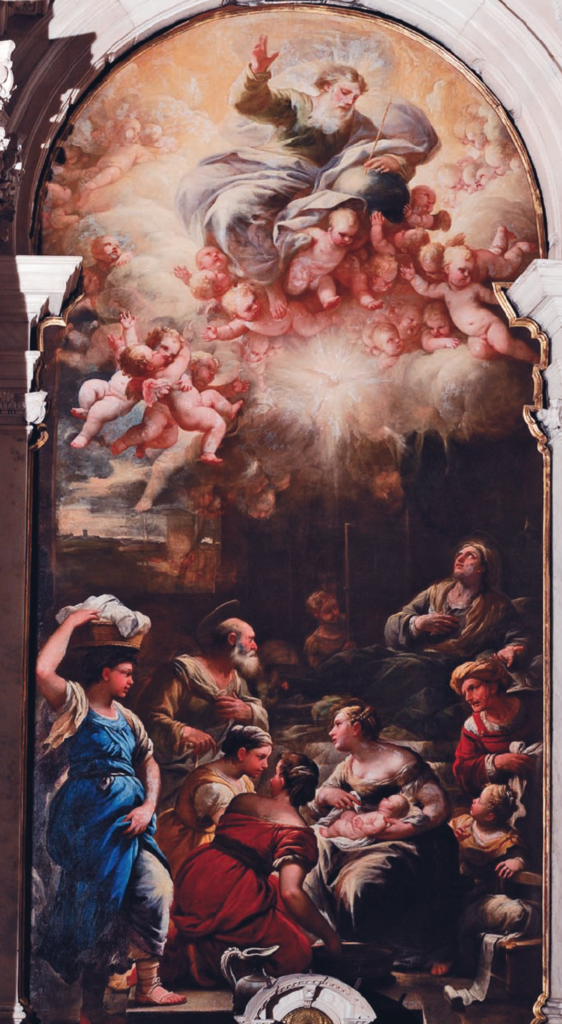SEARCH EVENT
Altare della natività di Maria
Altare della natività della Vergine (1° altare di destra)
Pala di Luca Giordano (+1705), tra le migliori, con un vivo senso idilliaco del paesaggio, del 1674. La scena centrale nella figura di Maria Bambina si sviluppa in senso circolare attorno a lei. Il noto pittore napoletano, che ottenne la commissione di queste pale sostituendosi al Volterrano, donandole al Senato Veneziano e offrendole a prezzo libero, autore pure degli altri due altari di destra, presenta in esse un momento dell’arricchimento luministico da lui dato alla pittura veneziana del tempo.
Sulle basi dei quattro pilastrini sostenenti le colonne dell’altare si notano quattro figure allegoriche, ispirate, come tutte le altre nei vari altari, direttamente o indirettamente, alla iconologia del Ripa (+1625), attribuite all’Ongaro su incerta notizia del Temanza. Da sinistra a destra: Castità, Secretezza, Sapienza, Carità.
Ai lati della cappella: tele raffiguranti Sant’Agostino e San Girolamo, del reggiano Antonio Triva (+1699 ca.). In contatto con il pittore Pietro Liberi.
______________________________________
Altar of Nativity of Our Lady (1st altar on the right)
The altarpiece by Luca Giordano ( dead in 1705) with its lively, peaceful scenery is one of the artists best, dating to 1674. The scene is centred on the image of the Child Mary and develops in a circular manner around her. The well-known Neapolitan painter obtained the commission for the creation of these altarpieces by taking the place of Volterrano and by offering them to the Council of Venice free of charge. Also the author of the other two altars to the right of the entrance, he enriches these pieces with luministic elements, which he also brought to Venetian painting of the time.
On the bases of the small pillars supporting the columns of the altar, there are four allegorical figures inspired, as all the others in the different altars, directly or indirectly by Ripa’s ( dead in 1625) imagery. They have been attributed to Ongaro based on an uncertain statement by Tommaso Temanza. From left to right: Chastity, Secrecy, Wisdom, and Charity.
On either side of the chapel: canvases depicting Saint Augustine and Saint Jerome by Reggio Emilia native Antonio Triva ( dead in 1699 ca.), who was in contact with the painter Pietro Liberi.
